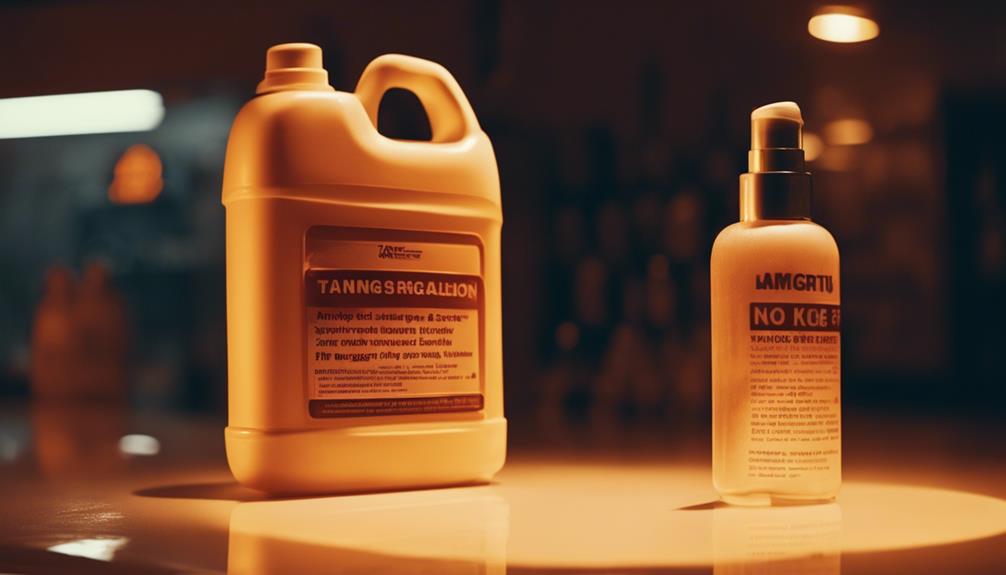Tanning beds can prove to be more harmful than anticipated. Oftentimes, excessive use can lead to skin sensitivity, redness, and irritation. The appearance of new freckles or moles could be a hint of overexposure. Additionally, frequent use may expedite skin aging, resulting in wrinkles and dark spots that give the illusion of premature aging. Excessive UV exposure puts your eyes at risk too, potentially leading to conditions like cataracts. Despite the appeal of a bronzed complexion, there are various safer alternatives available that do not pose a threat to your skin. To explore these options and more, there is a lot of valuable information to unpack on this topic.
Key Takeaways
- Tanning beds significantly increase the risk of melanoma, especially if used before age 35, alongside other skin cancers.
- Overexposure leads to accelerated skin aging, including deep wrinkles, sagging, and pigmentation issues.
- Eye irritation is common from tanning, with risks of long-term conditions like cataracts and macular degeneration.
- Tanning can cause immediate skin damage, such as redness, sensitivity, and itchy rashes, indicating distress.
Signs of Skin Damage
When you overuse tanning beds, your skin may show clear signs of damage, such as sensitivity, redness, and itchiness. You might notice lingering redness after tanning, indicating that your skin is distressed and at risk for further damage.
If you experience itchy rashes, this signals irritation from too much UV exposure, and you should consider cutting back on sessions. Watch for new freckles or moles; these could be signs of overexposure.
If any spots grow rapidly or change in size, shape, or color, seek medical attention immediately. Ignoring these warnings can lead to serious long-term consequences, including conditions like actinic keratoses or even melanoma.
Staying alert to these signs is essential for maintaining your skin's health.
Accelerated Skin Aging
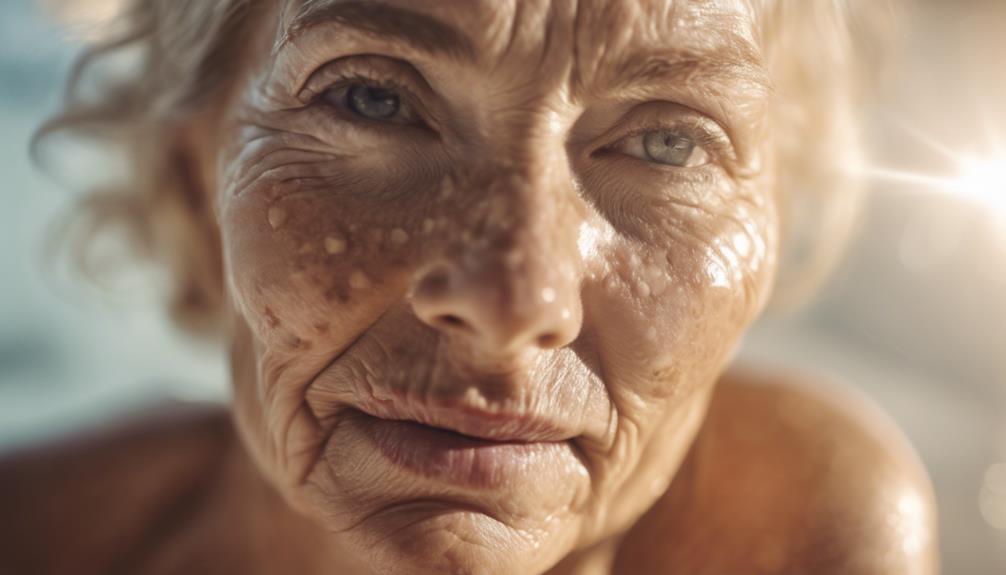
Overusing tanning beds accelerates skin aging, leading to noticeable wrinkles, sagging, and an uneven skin tone. You might think a tan makes you look youthful, but the truth is, it damages your skin's collagen and elastin, important for maintaining firmness.
The effects are often long-lasting, and you may notice:
- Deepening wrinkles around your eyes and mouth
- Increased sagging on your cheeks and jawline
- Dark spots and pigmentation issues
- Dull, lifeless skin that lacks energy
These changes can make you look older than you are, and reversing them often requires professional treatments.
It's essential to reconsider your tanning habits to protect your skin's health and appearance.
Eye Irritation Risks
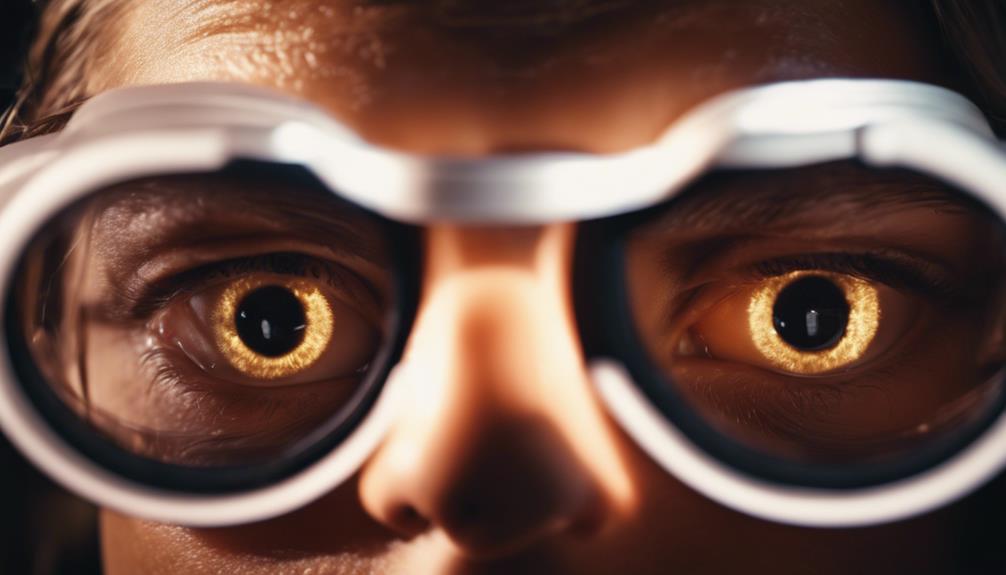
Frequent tanning bed use not only harms your skin but can also lead to significant eye irritation and potential long-term damage.
After a tanning session, you might notice gritty or red eyes, which signal excessive UV exposure. Ignoring these symptoms can increase your risk of serious eye issues, including photokeratitis, a painful condition resembling a sunburn on the cornea.
This irritation could escalate into more severe problems, like cataracts and macular degeneration, over time. To protect your eyes, always wear properly fitting goggles designed for tanning.
Don't risk your vision; prioritize your eye health by shielding them from harmful UV rays while you tan. Remember, your eyes deserve just as much care as your skin.
Long-Term Health Consequences

Using tanning beds can lead to serious long-term health consequences, including an increased risk of various skin cancers and accelerated skin aging. The risks are significant and often overlooked. Indoor tanning safety risks also include the potential for eye damage, such as cataracts and corneal burns, as well as an increased risk of melanoma, the deadliest form of skin cancer. Despite the dangers, tanning bed use remains popular, especially among young people seeking a year-round tan. It’s important for individuals to be aware of the risks and prioritize their health by avoiding artificial tanning methods.
Here are some critical issues to reflect on:
- Increased likelihood of developing melanoma, especially if you tan before age 35.
- Premature skin aging, leading to wrinkles and sagging skin.
- Development of actinic keratoses, which can progress to cancer.
- Dark spots and uneven skin tone, affecting your appearance.
These long-term effects can profoundly impact your skin's health and appearance, making it essential to rethink your tanning habits for a healthier future.
Preventive Measures
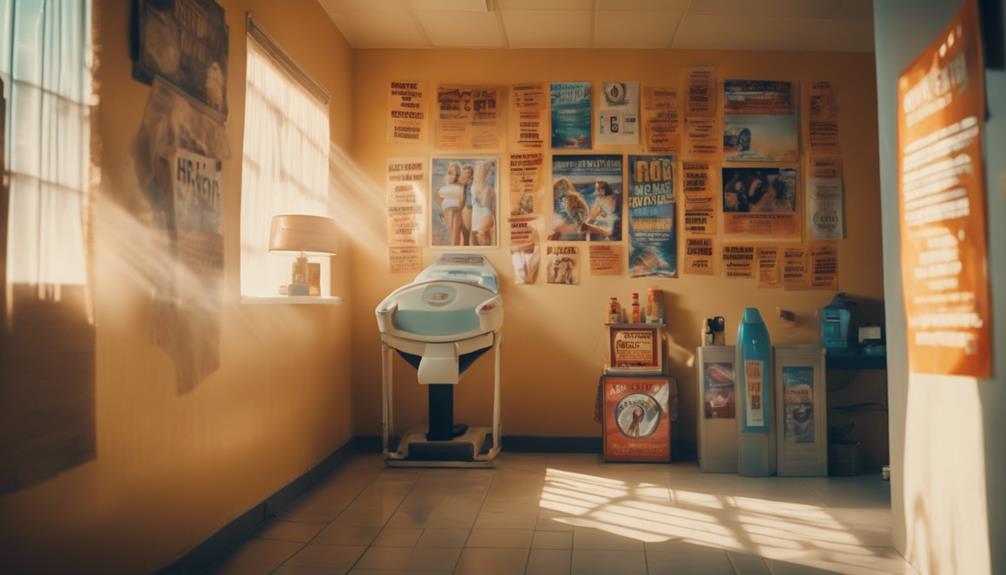
To protect your skin and eyes while tanning, prioritize effective preventive measures like moisturization and proper eye protection.
Always apply a high-quality moisturizer before and after tanning to keep your skin hydrated and minimize damage.
Invest in well-fitting tanning goggles that shield your eyes from harmful UV rays—don't skip this step, as it's essential for preventing long-term eye damage.
If you notice any irritation or discomfort, consider covering your eyes with a towel during sessions to reduce direct exposure.
Also, remember to avoid using lotions near your eye area to prevent unsightly goggle marks.
Finally, using sunscreen on exposed skin can further enhance protection, even when using tanning beds.
Prioritize these measures for safer tanning experiences.
Safe Alternatives to Tanning
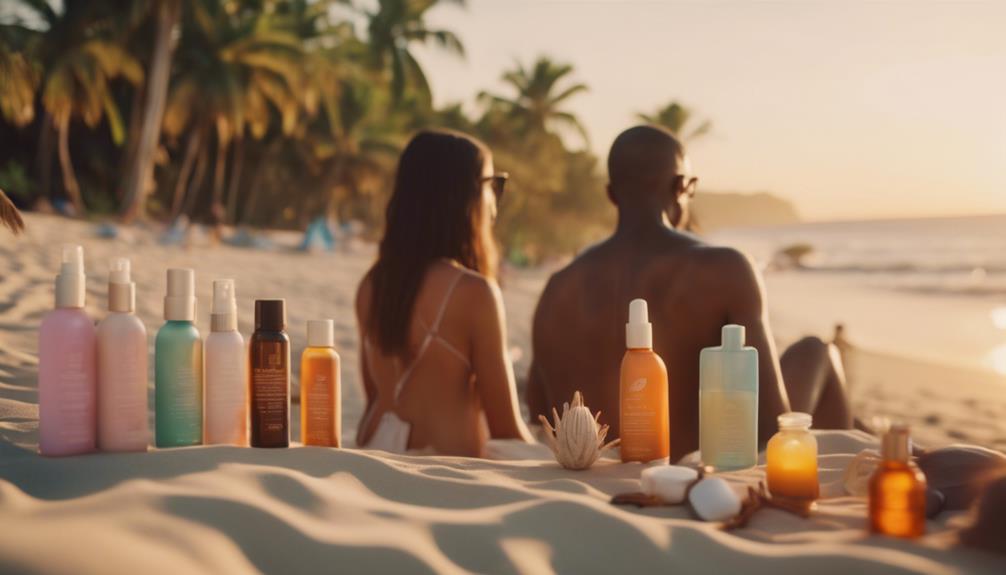
Exploring safe alternatives to tanning can help you achieve a sun-kissed glow without the risks associated with UV exposure. Here are some effective options to ponder:
- Self-tanning lotions: These products provide a natural-looking tan without sun damage.
- Spray tans: Quick and customizable, spray tans give instant results.
- Tanning towelettes: Easy to apply, they offer a streak-free finish on the go.
- Bronzing makeup: Use bronzer for temporary color that washes off easily.
Understanding UV Exposure
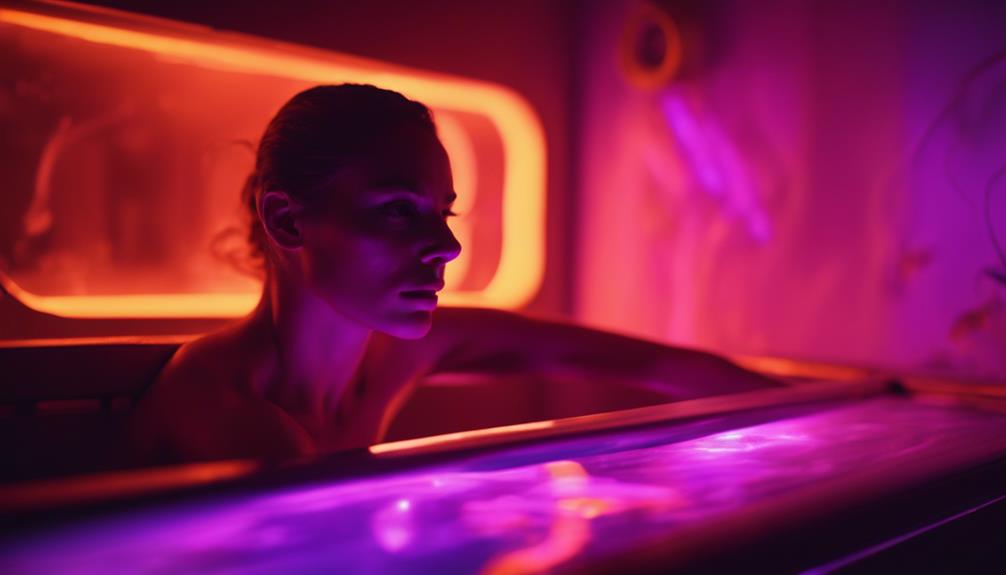
Achieving a sun-kissed glow through safe alternatives highlights the importance of understanding UV exposure and its potential risks to your skin and overall health. UV rays from tanning beds can accelerate skin aging and increase your risk of skin cancer. Here's a quick overview of UV exposure types:
| UV Type | Characteristics |
|---|---|
| UVA | Penetrates deeply, causes aging |
| UVB | Causes sunburn, linked to cancer |
| UVC | Most harmful, mostly absorbed by the atmosphere |
Knowing how these rays affect you can help you make informed decisions. Always consider safer options like self-tanners or spray tans to achieve that glow without risking your health. Protect your skin and eyes to maintain long-term beauty.
Frequently Asked Questions
How Often Should I Use Tanning Beds Safely?
To use tanning beds safely, limit sessions to once or twice a week, allowing at least 48 hours between visits. Always monitor your skin for any signs of damage or irritation after tanning.
Can Tanning Beds Provide a Base Tan Before Vacation?
Tanning beds might seem like a golden ticket to a perfect vacation tan, but they can actually wreak havoc on your skin. Instead, consider gradual self-tanners or bronzers for a safer, sun-kissed glow without risks.
What Are the Differences Between Tanning Beds and Natural Sunlight?
Tanning beds emit concentrated UV rays, while natural sunlight provides a spectrum of light and heat. Natural tanning involves more gradual exposure, reducing the risk of immediate skin damage compared to artificial tanning methods.
Are There Any Safe Tanning Bed Alternatives?
While tanning beds offer a quick tan, safer alternatives like self-tanners and bronzers provide a sun-kissed glow without UV exposure. You can achieve a radiant look without risking skin damage or long-term health issues.
How Can I Reverse Skin Damage From Tanning Beds?
To reverse skin damage from tanning beds, hydrate your skin, use retinoids, and apply sunscreen daily. Incorporate antioxidants into your routine, and consider professional treatments like chemical peels or laser therapy for enhanced results.
Are Tanning Beds Really as Dangerous as They Are Made Out to Be?
Indoor tanning safety concerns have sparked much debate. Research suggests that tanning beds increase the risk of skin cancer and premature aging. The UV radiation from these beds can damage skin cells, leading to potential health problems. It’s essential to prioritize skin health and explore safer alternatives to achieve a sun-kissed glow.
Conclusion
In summary, it's essential to be aware of the hidden dangers of tanning beds.
Your skin and eyes deserve better than the risks that come with that temporary glow.
By recognizing the signs of damage and opting for safer alternatives, you can keep your skin healthy and radiant.
Remember, all that glitters isn't gold. Embrace your natural beauty and protect yourself from harmful UV rays—your future self will thank you!
